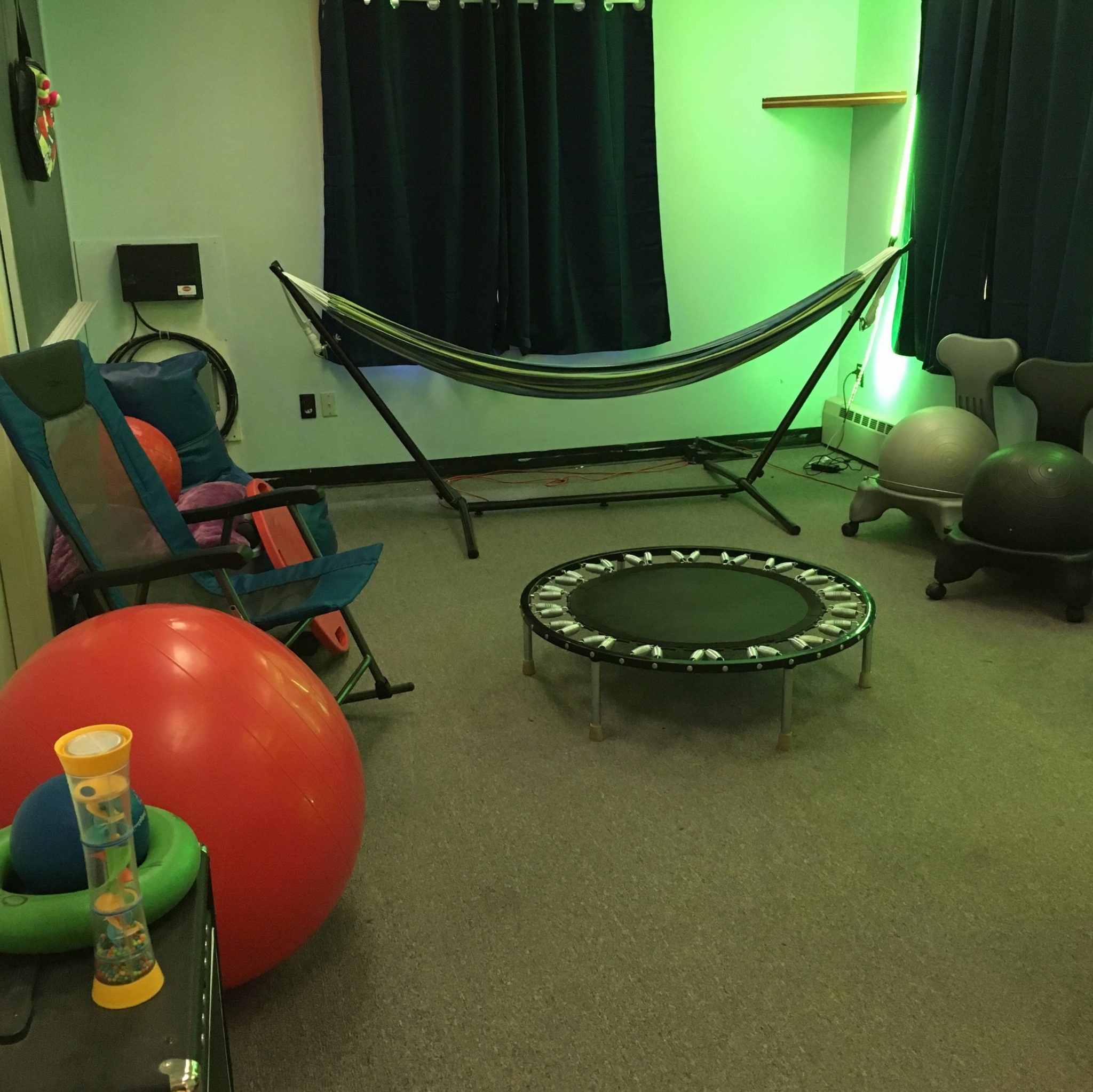
Anna Brown, Occupational Therapy Coordinator for Spurwink, is leading the implementation of sensory rooms at the six day treatment sites within the agency (Portland, Brunswick, Lewiston, Casco, Chelsea, and Cornville). After being awarded $10,000 from the Davis Family Foundation, Anna and her team of Occupational Therapists have been able to work with Spurwink staff and clients to customize each sensory room to suit the needs of the clients at the individual sites.
Conversations about what the sensory rooms would look like started with a meeting with Professor Kate Loukas, from the University of New England, and Tina Champagne, a consultant who is well known for being a leader in implementing sensory rooms for adults. It was determined that rooms should be “life spaces”, a place for students to regulate and feel safe and welcome. Each Occupational Therapist (there are seven at Spurwink) worked with students to determine a color for the walls and had students help paint, a great way for them to feel like the new room was something they all jointly “owned”. Tina consulted with the OT team in determining what equipment should be purchased for each location, and they decided on rocking chairs, hand fidgets, a tent, and a bean bag.
Continued conversations with Professor Lukas turned into a partnership with Spurwink and the University of New England, to collect data on the impact of sensory rooms and how they reduce restraints and seclusion; in short, do they help students stay in the classroom for longer amounts of time or help them return to the classroom sooner. Anna worked closely with the Spurwink Outcomes department to create a tracking sheet in which students could determine where their “energy” was by using Spurwink’s application of the ARC Thermometer before going into the sensory room, and where the student’s “energy” was when they left. Staff would also notate what equipment was used in the room to help the student regulate and whether the visits to the sensory room over time helped reduce restraints for that particular student. Spurwink staff started collecting data in May of this year and have been sharing that data with five graduate students at UNE, who are analyzing and researching the impact of the sensory rooms and helping to determine what equipment has the biggest impact on the students ability to regulate.
“Spurwink is trying to change culture to use strategy vs. restraint,” says Anna Brown. Having students able to regulate, learn regulation strategies, engage in educational activities, and increase their time in the classroom are just some of the goals that the OT team have for their students with the new sensory room implementation. Spurwink will continue to collect data through December of this year, and hope to publish their results in 2017.
